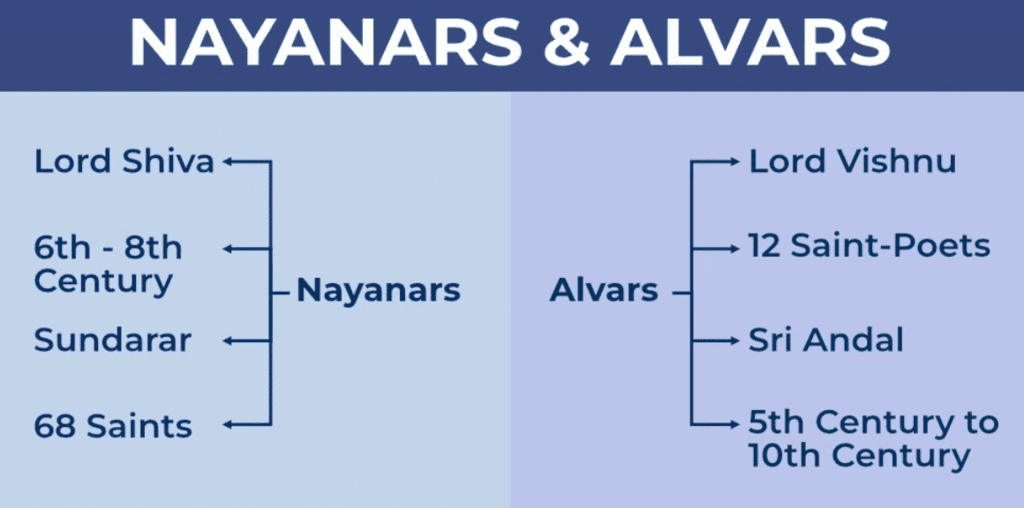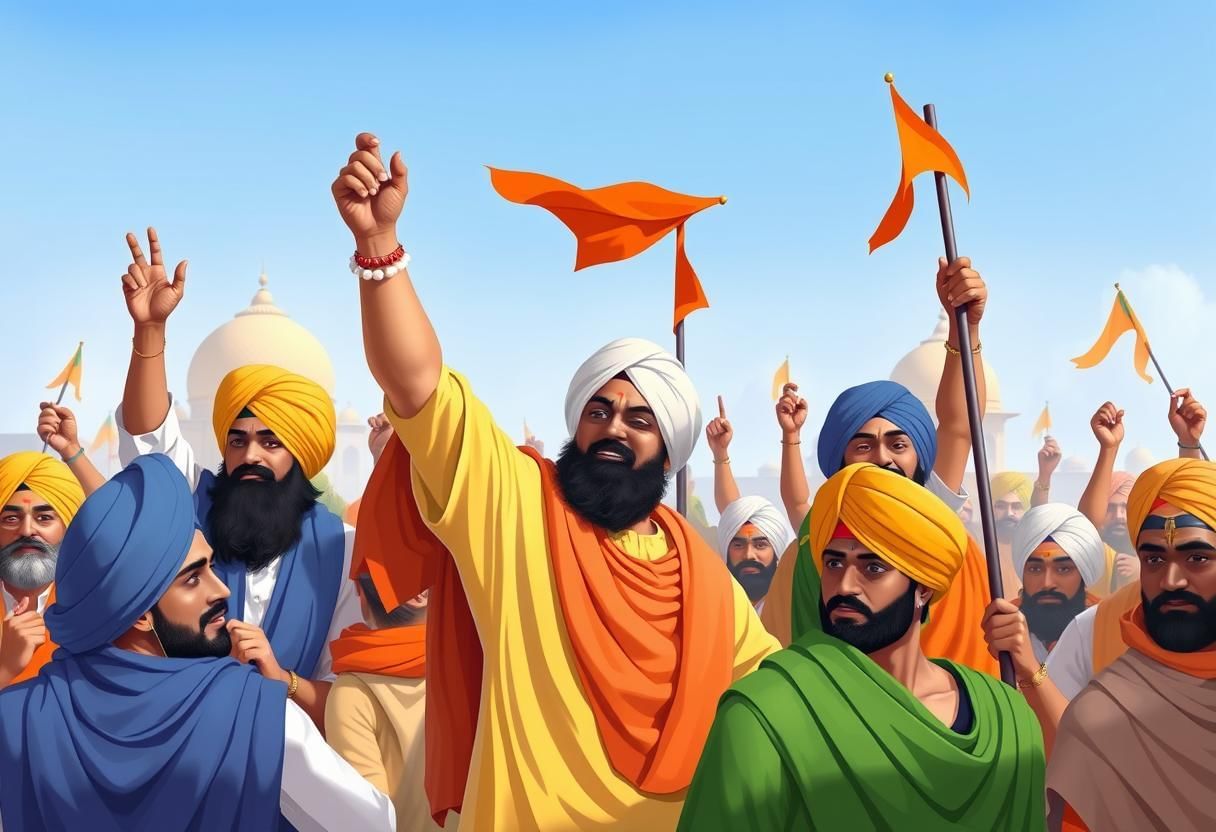Devotional Paths to the Divine Class 7 Worksheet History Chapter 6
Q.1. Write a short note on Shankara.
Shankara, one of the most influential philosophers of India, was born in Kerala in the eighth century. He was an advocate of Advaita or the doctrine of the oneness of the individual soul and the Supreme God which is the Ultimate Reality. He taught that Brahman, the only or Ultimate Reality, was formless and without any attributes. He considered the world around us to be an illusion or maya, and preached renunciation of the world and adoption of the path of knowledge to understand the true nature of Brahman and attain salvation.
Q.2. Who were the Nayanars and Alvars?
There were 63 Nayanars, who belonged to different caste backgrounds such as potters, “untouchable” workers, peasants, hunters, soldiers, Brahmanas and chiefs. The best known among them were Appar, Sambandar, Sundarar and Manikkavasagar. There are two sets of compilations of their songs – Tevaram and Tiruvacakam.
There were 12 Alvars, who came from equally divergent backgrounds, the best known being Periyalvar, his daughter Andal, Tondaradippodi Alvar and Nammalvar. Their songs were compiled in the Divya Prabandham.

Q.3. Why Mughal emperor Jahangir looked upon Sikh community as a potential threat?
By the beginning of the seventeenth century the town of Ramdaspur (Amritsar) had developed around the central Gurdwara called Harmandar Sahib (Golden Temple). It was virtually self-governing and modern historians refer to the early seventeenth century Sikh community as ‘a state within the state’. The Mughal emperor Jahangir looked upon them as a potential threat.
Q.4. Why did people turn to the teachings of the Buddha or the Jainas during the medieval period?
The belief that social privileges came from birth in a “noble” family or a “high” caste was the subject of many learned texts. Many people were uneasy with such ideas and turned to the teachings of the Buddha or the Jainas according to which it was possible to overcome social differences and break the cycle of rebirth through personal effort.
Q.5. What purpose did khanqahs serve?
The Sufi masters held their assemblies in their khanqahs or hospices. Devotees of all descriptions including members of the royalty and nobility, and ordinary people flocked to these khanqahs. They discussed spiritual matters, sought the blessings of the saints in solving their worldly problems, or simply attended the music and dance sessions.
Q.6. What did Ramanuja propose?
According to him the best means of attaining salvation was through intense devotion to Vishnu. Vishnu in His grace helps the devotee to attain the bliss of union with Him. He propounded the doctrine of Vishishtadvaita or qualified oneness in that the soul even when united with the Supreme God remained distinct.
Q.7. For either the Virashaivas or the saints of Maharashtra, discuss their attitude towards caste.
The Virashaivas argued strongly for the equality of all human beings and against Brahmanical ideas about caste and the treatment of women. Saint of Maharashtra rejected all forms of ritualism, outward display of piety and social differences based on birth.
Q.8. How Chola and Pandya kings contributed for the growth of the Bhakti movement?
Between the tenth and twelfth centuries the Chola and Pandya kings built elaborate temples around many of the shrines visited by the saint-poets, strengthening the links between the bhakti tradition and temple worship.
Q.9. How did Khalsa Panth emerge?
The Sikh movement began to get politicized in the seventeenth century, a development which culminated in the institution of the Khalsa by Guru Gobind Singh in 1699. The community of the Sikhs, called the Khalsa Panth, became a political entity.

Q.10. Why do you think many teachers rejected prevalent religious beliefs and practices?
Many teachers rejected prevalent religious beliefs and practices because such beliefs advocated ritualism, outward display of piety and social differences based on birth.
Q.11. Who was Ramanuja?
Ramanuja, born in Tamil Nadu in the eleventh century, was deeply influenced by the Alvars. According to him the best means of attaining salvation was through intense devotion to Vishnu.
Q.12. Why did the Mughal emperor Jahangir order the execution of Guru Arjan in 1606?
The Mughal emperor Jahangir looked upon them as a potential threat and he ordered the execution of Guru Arjan in 1606.
Q.13. Who initiated the Virashaiva movement?
Virashaiva movement was initiated by Basavanna and his companions like Allama Prabhu and Akkamahadevi.
Q.14. Who were the followers of Baba Guru Nanak?
His followers belonged to a number of castes but traders, agriculturists, artisans and craftsmen predominated.
Q.15. What does khanqah or hospice mean?
Khanqah or hospice means house of rest for travellers, especially one kept by a religious order.
|
63 videos|371 docs|46 tests
|
FAQs on Devotional Paths to the Divine Class 7 Worksheet History Chapter 6
| 1. What are some common devotional practices that lead to a deeper connection with the divine? |  |
| 2. How can I incorporate devotional paths into my daily life? |  |
| 3. What role does community play in devotional practices? |  |
| 4. Are there specific texts or scriptures that guide devotional practices? |  |
| 5. How can I measure my spiritual growth through devotional practices? |  |






















